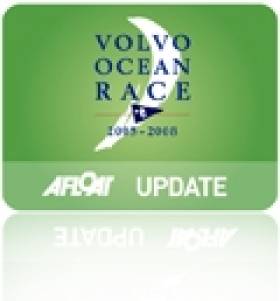Displaying items by tag: Badoiri an Cladaig
#vor – Tradtional boating got a boost at the Volvo Ocean Race in Galway last night at a special ceremony in Galway Harbour when the country's newest community built Galway hooker was named in a ceremony attended by Social Protection Minister, Joan Burton TD. The boat has been named 'Croí an Cladaig'.
The 32–foot boat is the first of its class to be built in Galway since 1922. In keeping with the Claddagh's centuries old traditions it will be launched on Sunday afternoon, after it is blessed in a ceremony conducted by Dominican Fathers.
The new hooker took 18 months to design and build as part of a training scheme organised by the Claddagh based boatmen's association, "Badoiri an Cladaig", FAS, Galway City & County Enterprise Board and several other local community groups.
Chairperson of "Badoiri an Cladaig", Michael Coyne, said the building of the new hooker has created huge excitement in the Claddagh and has given new impetus to efforts to revive the ancient craft of traditional boat building in Galway.
























































